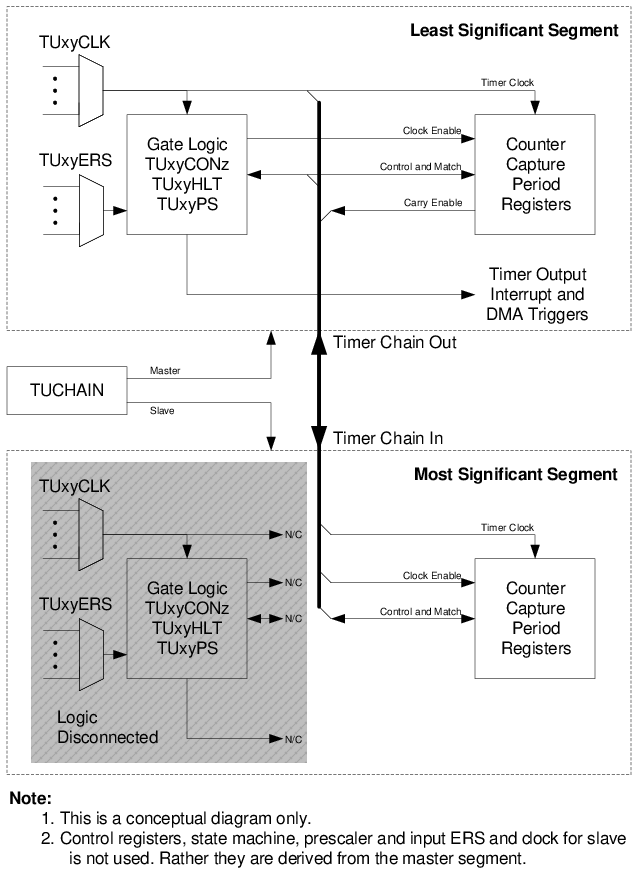A special feature of the UTMR module is the ability to chain two timers together to operate as one big timer. This is done primarily to increase the size of the timer. An n-bit UTMR module can be chained with an m-bit UTMR module to operate as a single (n+m)-bit UTMR.
For example, two 8-bit versions of the timer can be chained together to form a 16-bit timer. Or, two 16-bit timers can be chained together to form a 32-bit timer. These timer combinations are specific to each device. Please refer to the device data sheet for specific chaining combinations available. These combinations can be enabled using appropriate bits in the TUCHAIN register.
When two timers are chained, one of them is designated as a Master whereas the other is designated as a Slave. The Master forms the LSBs of the chained timer, whereas the Slave forms the MSBs. These Master/Slave combinations are also device specific. Please refer to the device data sheet for specific details.
